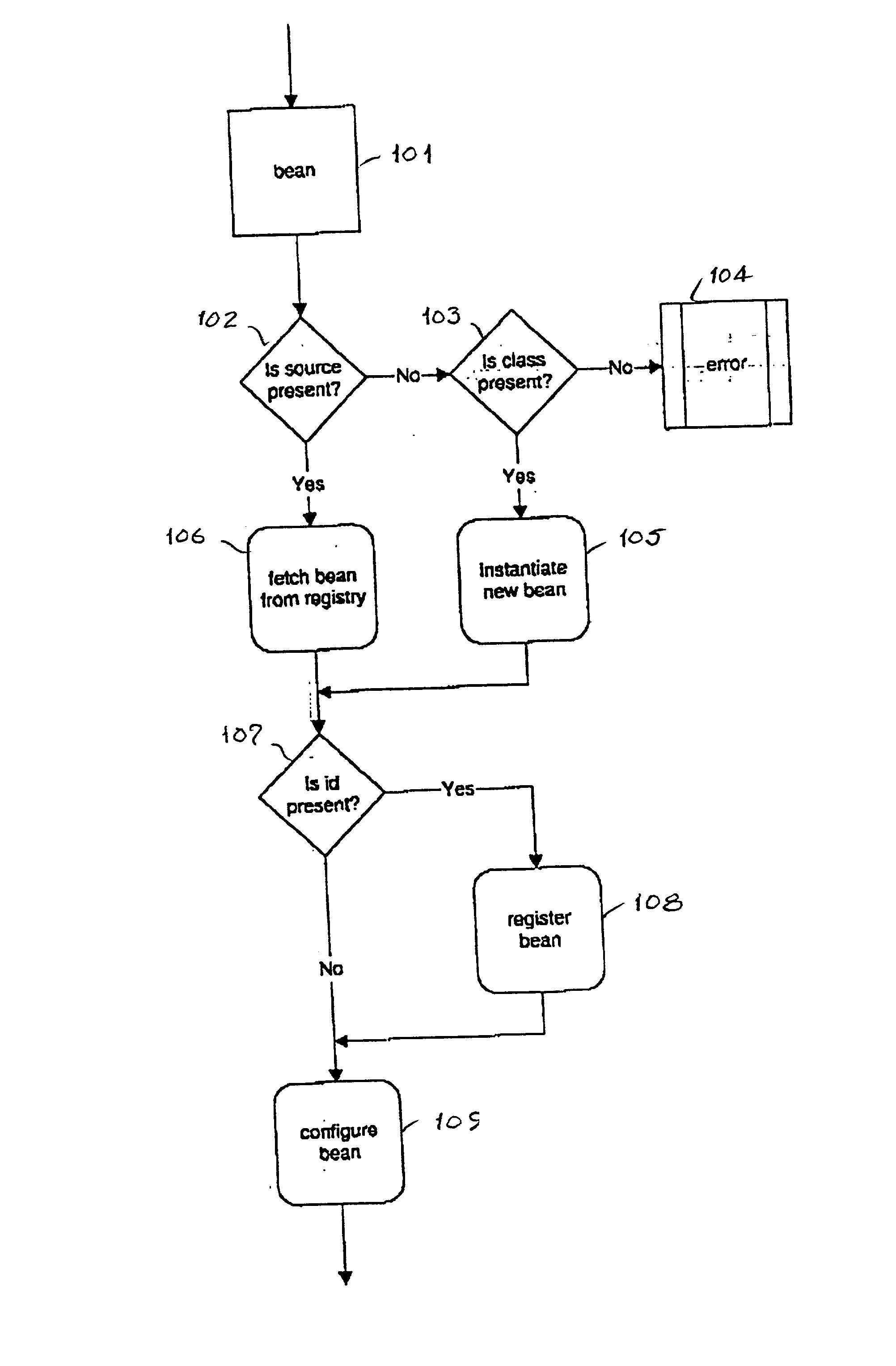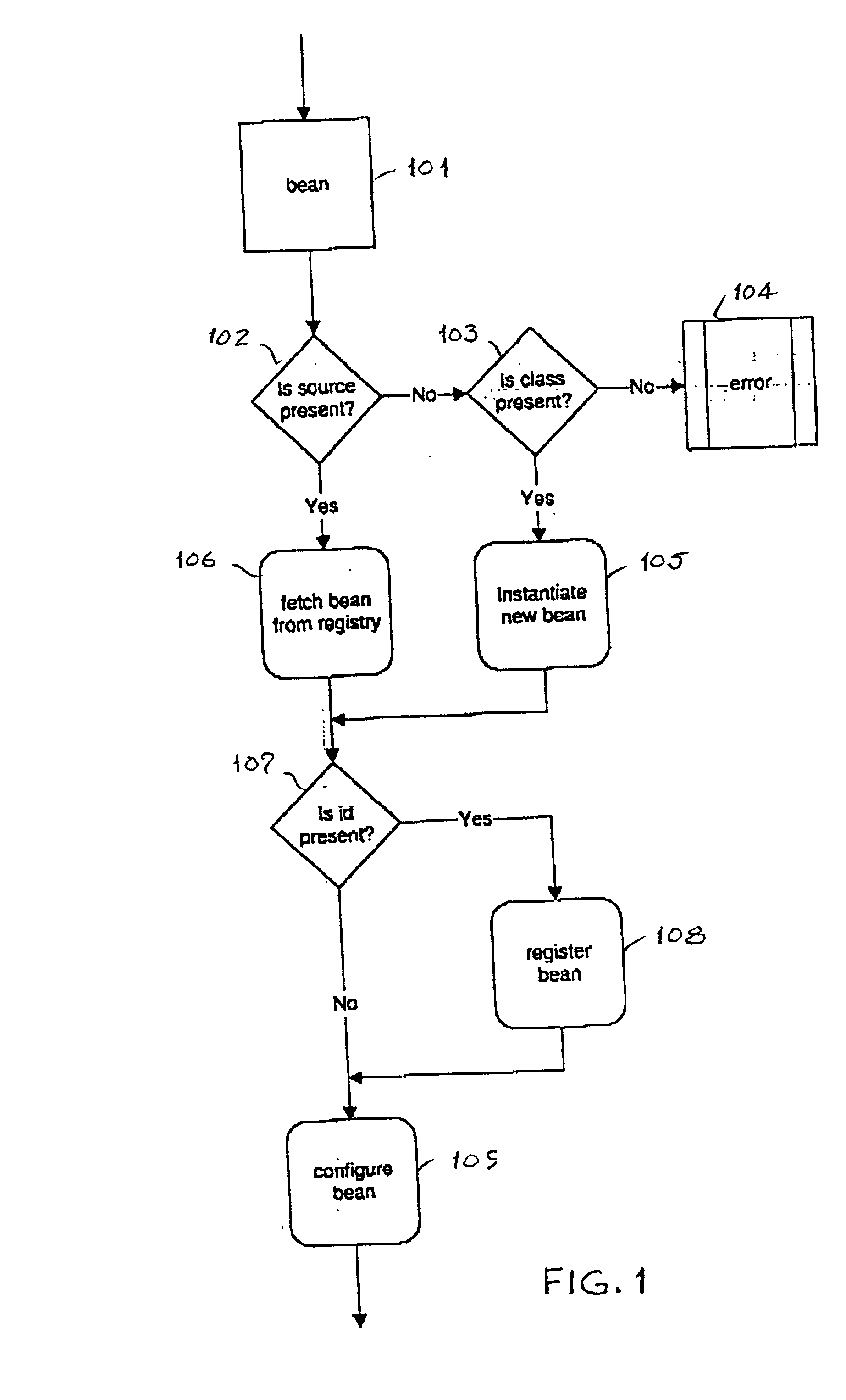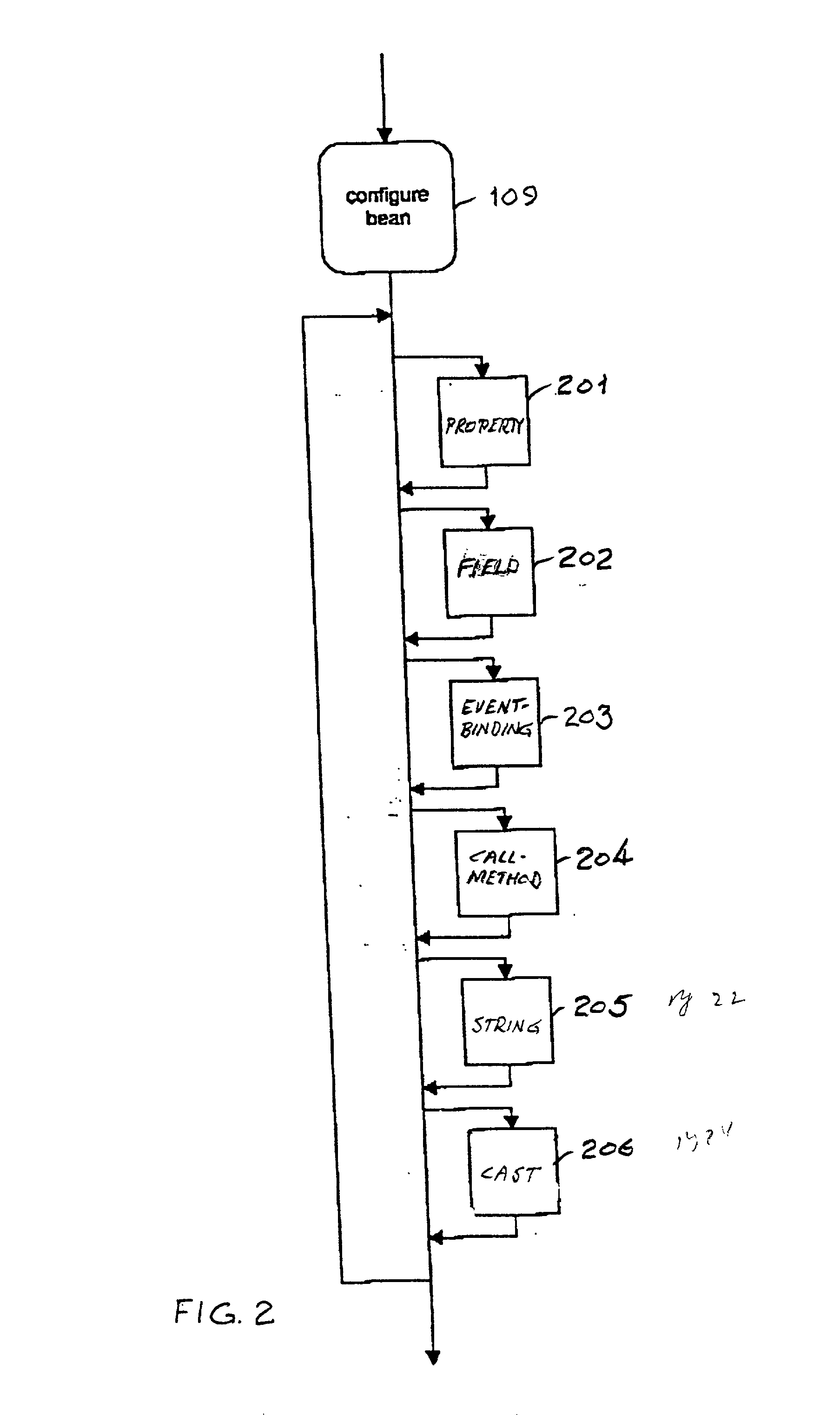Component oriented programming (COP) language
a component-oriented programming and component-oriented technology, applied in the field of computer-aided software engineering, can solve the problems of not being able to implement large-scale applications, c++ can be expensive, and languages that do not exis
- Summary
- Abstract
- Description
- Claims
- Application Information
AI Technical Summary
Benefits of technology
Problems solved by technology
Method used
Image
Examples
case 4
[0059]
[0060] Looking up a class bean:
[0061] Syntax:
7 ... configure bean ...
[0062] Semantics:
[0063] The class name "name-of-class-to-find" is loaded and the instance of java.lang.Class object representing it is returned. Special recognition has been given to the names "boolean", "byte", "char", "short", "int", "lont", "float", and "double" to enable access to the class objects representing the primitive types. For example, setting the source attribute to "class:int" would retrieve the object java.lang.Integer.TYPE. This can be used to make static method calls, for example.
[0064] Examples:
8
[0065] FIG. 3 illustrates the semantics of the element 201 in FIG. 2. A test is made in decision block 301 to determine if a value is present. If not, a further test is made in decision block 302 to determine if a child element is present. If not, yet another test is made in decision block 303 to determine if a source is present. If so, the bean is fetched from the registry in function bl...
case 3
[0101]
[0102] Getting a field value:
[0103] Syntax:
20
[0104] Semantics:
[0105] Returns the value of the named field as a bean. If the source attribute is present, then the operation is performed on the bean with that name instead of the default (i.e., containing) bean by first looking up that name in the object registry and then getting the value of the field.
[0106] Example:
21
[0107] FIG. 5 illustrates the syntax of the element 203 in FIG. 2. A test is made in decision block 501 to determine if a source bean is present. If so, the source bean is fetched from the registry in function block 502. If no source is present or after the source bean is fetched from the registry, a test is made in decision block 503 to determine if a target bean is present. If so, the target bean is fetched from the registry in function block 504. If not or after the target bean has been fetched from the registry, the target bean is attached with the source bean as a listener of the desired event in funct...
case 1
[0122]
[0123] Creating a string with a non empty value:
[0124] Syntax:
26 value-of-strlng
[0125] Semantics:
[0126] An instance of class java.lang. String is returned with the value "value of-string". The entire contents between the open and close tags are used as the value (including any white space).
[0127] Example:
27 200 100
PUM
 Login to View More
Login to View More Abstract
Description
Claims
Application Information
 Login to View More
Login to View More - R&D
- Intellectual Property
- Life Sciences
- Materials
- Tech Scout
- Unparalleled Data Quality
- Higher Quality Content
- 60% Fewer Hallucinations
Browse by: Latest US Patents, China's latest patents, Technical Efficacy Thesaurus, Application Domain, Technology Topic, Popular Technical Reports.
© 2025 PatSnap. All rights reserved.Legal|Privacy policy|Modern Slavery Act Transparency Statement|Sitemap|About US| Contact US: help@patsnap.com



